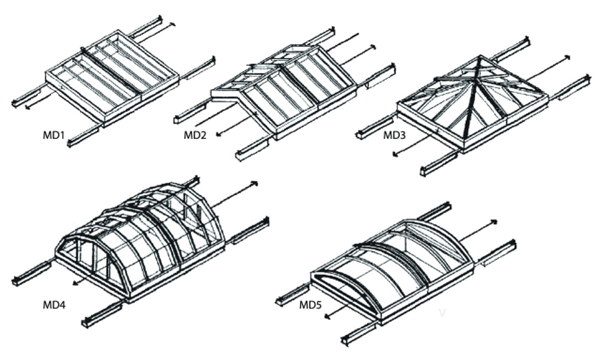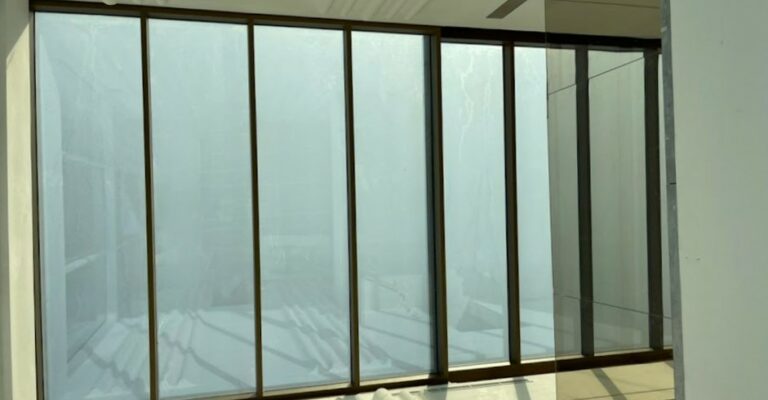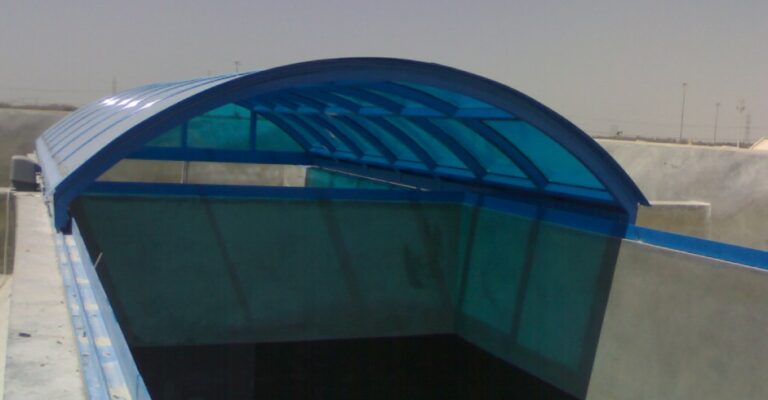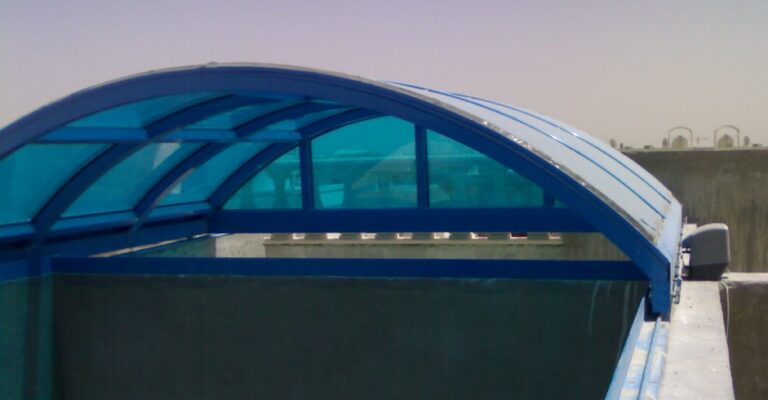Al Mamary adds a retractable skylight for natural light and fresh air
Retractable skylight roofs are the best solution to cover courtyards, palaces, villas, indoor pool areas, open coffee shops, shopping malls and Restaurants & Terraces.
-
Natural lighting
- Cost savings on heat and AC
-
Energy efficiency
- Healthier environment
Retractable Skylight Designs
Al Mamary specializes in designing skylight openings that seamlessly adapt to your needs, providing 50%, 75%, or 100% aperture control based on the parking area's placement – whether atop the roof or adjacent to the skylight
Shapes are unlimited , you can achieve any design you choose.
Al Mamary has solutions to use aluminum or steel structures, depending on the span of the opening.
Motorised operation makes the retractable roof function flawless. Just with the touch of a button, the retractable roof opens the sky for you.
Retractable Skylight Material
Glazing can be laminated glass or polycarbonate, all as per client requirements
Gasket is EPDM.
Motors are European brands, heatless, IP65, and low sound.
Retractable Skylights feature and how it works
A retractable skylight feature is a design element that allows a skylight to be opened and closed as desired. It provides the flexibility to let in natural light and fresh air when desired, and also to close off the skylight for insulation or protection against the elements.
The working mechanism of a retractable skylight feature can vary depending on the specific design, but here is a general description of how it typically works:
Frame and Glazing: The retractable skylight consists of a sturdy frame that surrounds the opening in the roof and holds the glazing material in place. The glazing material is usually made of glass or a transparent, durable material that allows light to pass through.
Motorized Operation: Many retractable skylights are motorized for easy operation. They are equipped with a motor and a control system that allows the skylight to be opened or closed with the push of a button or the use of a remote control. Some skylights may also have manual operation options using a crank or lever.
Guide Rails and Seals: The skylight frame typically incorporates guide rails that facilitate the movement of the skylight panel. These guide rails ensure that the skylight moves smoothly along a predetermined path. Additionally, the skylight is equipped with seals to prevent water leakage when closed and to provide insulation when in use.
Extension and Retraction: When the retractable skylight is activated to open, the motor or manual operation mechanism engages, causing the skylight panel to move along the guide rails. It slides or pivots, depending on the specific design, to an open position, allowing natural light and air to enter the space below.
Closing and Securing: To close the retractable skylight, the motor or manual mechanism is activated again in the opposite direction. The skylight panel moves back to its closed position, aligning with the frame and sealing tightly to prevent water infiltration. Some skylights may have additional locking mechanisms to secure the skylight in the closed position for added safety and security.
The retractable skylight feature provides homeowners or building occupants with the ability to control the amount of natural light and ventilation they want in a space. It adds versatility to the skylight’s functionality, allowing for a more comfortable and customizable indoor environment.

Retractable Skylights feature and how it works
Frame and Glazing
Motorized Operation
Guide Rails and Seals
Extension and Retraction
Closing and Securing
The retractable skylight feature provides homeowners or building occupants with the ability to control the amount of natural light and ventilation they want in a space. It adds versatility to the skylight’s functionality, allowing for a more comfortable and customizable indoor environment.
The materials used for construction
Glass
Glass provides excellent clarity and transparency, allowing maximum natural light to enter the space below. It offers a clear view of the sky and surrounding environment.
Glass is highly durable and resistant to scratching or yellowing over time. It is less prone to damage from UV radiation, which can cause discoloration and degradation in other materials.
Glass has better insulation properties compared to polycarbonate. It provides greater thermal efficiency, helping to maintain the desired indoor temperature and reducing energy costs.
Glass skylights typically provide better sound insulation compared to polycarbonate, reducing noise transmission from the outside environment.
Glass skylights are generally easier to clean and maintain. They can be cleaned with standard glass cleaning products and are less prone to scratching.
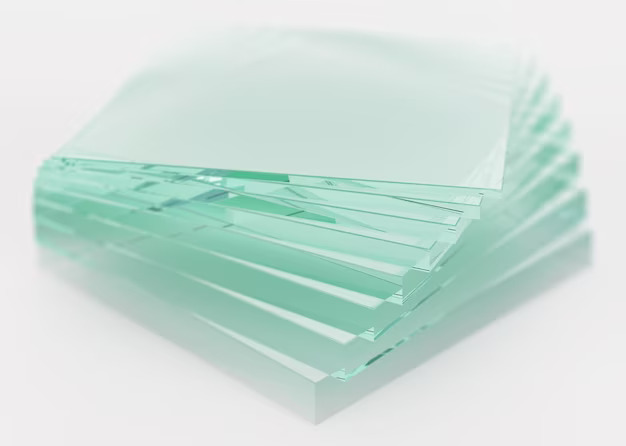

Polycarbonate
Polycarbonate is highly impact-resistant and can withstand greater forces without breaking, making it a safer option in areas prone to hail or falling debris.
Polycarbonate is lighter than glass, which can make it easier to handle during installation. It also puts less strain on the skylight structure.
Polycarbonate can be molded and shaped into various forms, allowing for more design flexibility. It can be bent or curved to match specific architectural requirements.
Polycarbonate can be manufactured with built-in UV protection, blocking harmful UV rays and preventing discoloration or degradation over time.
Polycarbonate skylights are generally more cost-effective compared to glass. They offer a more budget-friendly option for those with limited financial resources.

However, it’s worth noting that polycarbonate has some limitations. It is more prone to scratching and can lose clarity over time due to exposure to UV radiation. It also has a lower fire resistance compared to glass.
Ultimately, the choice between glass and polycarbonate for skylights depends on factors such as desired aesthetics, thermal performance requirements, budget, and the specific environmental conditions in the installation area. It’s advisable to consult with professionals or manufacturers who can provide guidance based on your specific needs and preferences.
Retractable skylights warranty information and customer support services

We, Al Mamary Aluminium & Skylight Factory L.L.C hereby provide warranty for Structural Skylight Works executed in the above-mentioned project against defective materials (Silicon, Painting, Aluminum, Rubber, connection, and Polycarbonate-workmanship) for 10 years starting from date of Taking Over Certificate.
We are liable for 1-year free maintenance starting from date of Taking Over Certificate.
The above warranty does not include defects caused by third party such as workmanship, human vandalism, abnormal natural conditions (earthquake, fire,).
If any new installations/changes to the system by third party, this warranty shall be considered cancelled.

Sliding Skylight

Seamless Indoor-Outdoor Connection
Our sliding skylights are the epitome of modern skylight design. These skylights can be effortlessly moved horizontally along tracks, giving you full control over ventilation and light. They’re a versatile choice for those who want to bring the outdoors inside while maintaining complete control.
Key Features
Effortless Operation: Our sliding skylights glide smoothly along tracks, making it easy to open and close them with minimal effort.
Perfect Ventilation: Enjoy the perfect amount of fresh air and a gentle breeze by partially or fully opening your sliding skylight.
Indoor-Outdoor Fusion: Create a seamless connection between your indoor and outdoor spaces, enhancing your living environment.
Customization: We offer a range of designs and sizes to ensure your sliding skylight perfectly complements your architecture and style.
Year-Round Enjoyment: Whether it's the warmth of the sun in winter or a cool breeze in summer, our sliding skylights provide comfort throughout the year.
Hinged Skylight

Effortless Ventilation and Natural Light
Our hinged skylights offer a practical and simple solution for those seeking both natural light and ventilation. These skylights feature one or more sections that pivot on hinges, allowing them to open and close just like a door.



